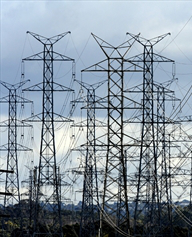Power prices slide
 Australian electricity prices are falling overall, but there is significant variation between jurisdictions.
Australian electricity prices are falling overall, but there is significant variation between jurisdictions.
The Australian Energy Market Commission’s (AEMC) annual report on electricity price trends shows a falling price outlook for the next two years.
Overall residential electricity prices for the next two years are estimated to fall slightly because a pipeline of new renewables supply and flat demand is taking pressure off price.
“Prices across Australia are likely to be down in states which have competitive markets, but there are regional supply chain factors that will affect price outcomes in the jurisdictions depending on where you live and how much electricity you use,” says AEMC Chief Executive, Anne Pearson.
Overall, a representative consumer will be paying around $28 less than today by July 2020 with the national average bill falling from $1,367 to $1,338.
Over the next two years the volume of new wind and solar capacity will drive the typical wholesale component cost down by $55 - offsetting small increases in other parts of the supply chain, with network costs flat and the environmental cost component up by $4.
The report predicts some regionally-specific shifts over the next two years, including;
- NSW prices estimated to fall despite rising environmental and transmission network costs
- Victorian prices estimated to fall with decreasing wholesale and environmental costs offsetting increases across the rest of the supply chain
- South-east Queensland prices are estimated to fall primarily due to decreasing wholesale costs.
- South Australian prices are expected to fall, due to decreasing wholesale costs
- Tasmania prices are expected to fall slightly over the next two years
- ACT prices are estimated to increase due to rising environmental and network costs
- Western Australia and Northern Territory governments setting slight price rises
Ms Pearson says the energy sector’s challenge in years ahead will be to continue balancing electricity supply and demand as the energy market restructures.
“Cost control helps contain prices,” she said.
“The changing generation mix is affecting supply and demand at the wholesale end of the supply chain with a vast amount of new generation and battery storage entering the national electricity market.
“The large-scale renewable energy target (LRET) is putting downward pressure on prices nationally as large generation certificate (LGC) prices drop ahead of the scheme’s 2020 closure. The small-scale renewable energy scheme (SRES) is driving upward pressure on prices nationally in response to strong growth in take-up of solar PV and other technologies like solar hot water, small scale wind systems and source heat pumps.
“Our report shows networks account for around half of consumer bills. Managing the costs of connecting new generation will be a major challenge. We must avoid over-engineered solutions to stop gold plating and price spikes,” she said.








 Print
Print